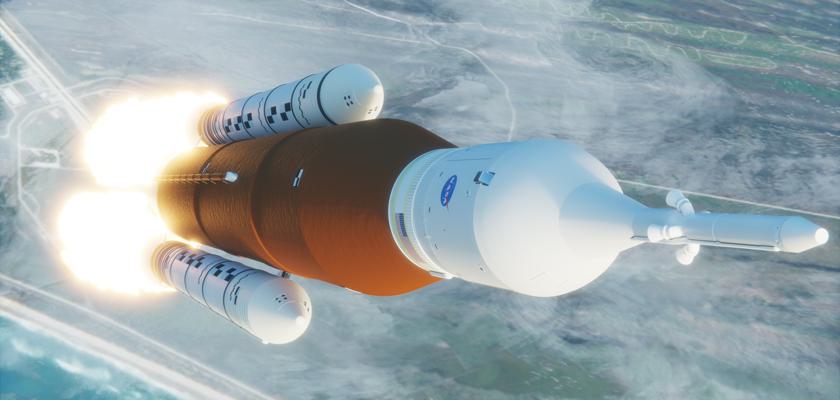By Jim McDade
John Honeycutt, the manager of the Space Launch System Program at Huntsville’s NASA’s Marshall Space Flight Center, is pleased with the results from Wednesday’s critical “wet dress test rehearsal” of the powerful Artemis I super heavy-lift rocket at Kennedy Space Center in Florida.
“It was a long day. The team was on their A-game," Honeycutt said Tuesday morning. While the football field length rocket performed very well overall during the simulated countdown test, there were a few problems with some hardware, including a problem with the same piece of ground support equipment on the launch pad that caused the failure of a previous attempt to fully fill the rocket’s huge propellant tanks and simulate a countdown during the last test a couple of months ago.
Tom Whitmeyer, the deputy associate administrator in charge of the Artemis Space Launch System program, said the test results from the simulated fueling and countdown test were “in the 90th percentile.” The NASA headquarters told reporters “The rehearsal was successful, but we do have a leak that we have to take care of.”
Whitmeyer said that engineers will need some time to analyze the technical issues before the space agency can announce a firm date for the launch of Artemis I to the Moon.
“This was a very valuable test rehearsal,” Whitmeyer said.
The countdown test was halted only twenty-nine seconds before it reached zero, about twenty seconds earlier than originally planned, due to a potentially dangerous hydrogen leak at the launch pad. Charley Blackwell-Thompson, the Artemis launch director at Kennedy Space Center, said, “During our propellant loading we did discover a hydrogen leak on the SLS core stage, the 4-inch bleed quick disconnect.”
Sensors on the pad indicated that the quick disconnect on the launch pad was leaking hydrogen, the same problem that cropped up during the previous countdown simulation and had supposedly been corrected by NASA contractor Air Liquide. That quick disconnect is vital to performing what rocket engineers call a bleed quick start that’s used to start the -423 Fahrenheit liquid hydrogen passing through the core stage engines in order to condition them for firing. That leak occurred between a plate where the hydrogen plumbing runs between the launch pad support equipment and the launch vehicle. Blackwell-Thompson indicated that the leak is not quite the same as the previous one that Air Liquide worked to resolve since the initial failure last April during the first wet test dress rehearsal, saying, “This [leak] is different from what we observed in our last wet dress rehearsal.”
Despite the pesky quick disconnect issues, Blackwell-Thompson was pleased with the overall results of a key milestone in the development of NASA’s most powerful rocket ever.
“It was the first time we fully loaded the SLS rocket’s core stage and the ICPS or Interim Cryogenic Propulsion Stage with both liquid oxygen and liquid hydrogen…that was a big milestone for us," Blackwell-Thompson said.
A separate problem with a check valve in the upper stage was successfully resolved during the Tuesday test, but the leaky quick disconnect connection remains the only unresolved problem with the massive rocket.
To connect with the author of this story, or to comment, email Jim.McDade@1819News.com.
Don’t miss out! Subscribe to our newsletter and get our top stories every weekday morning.










